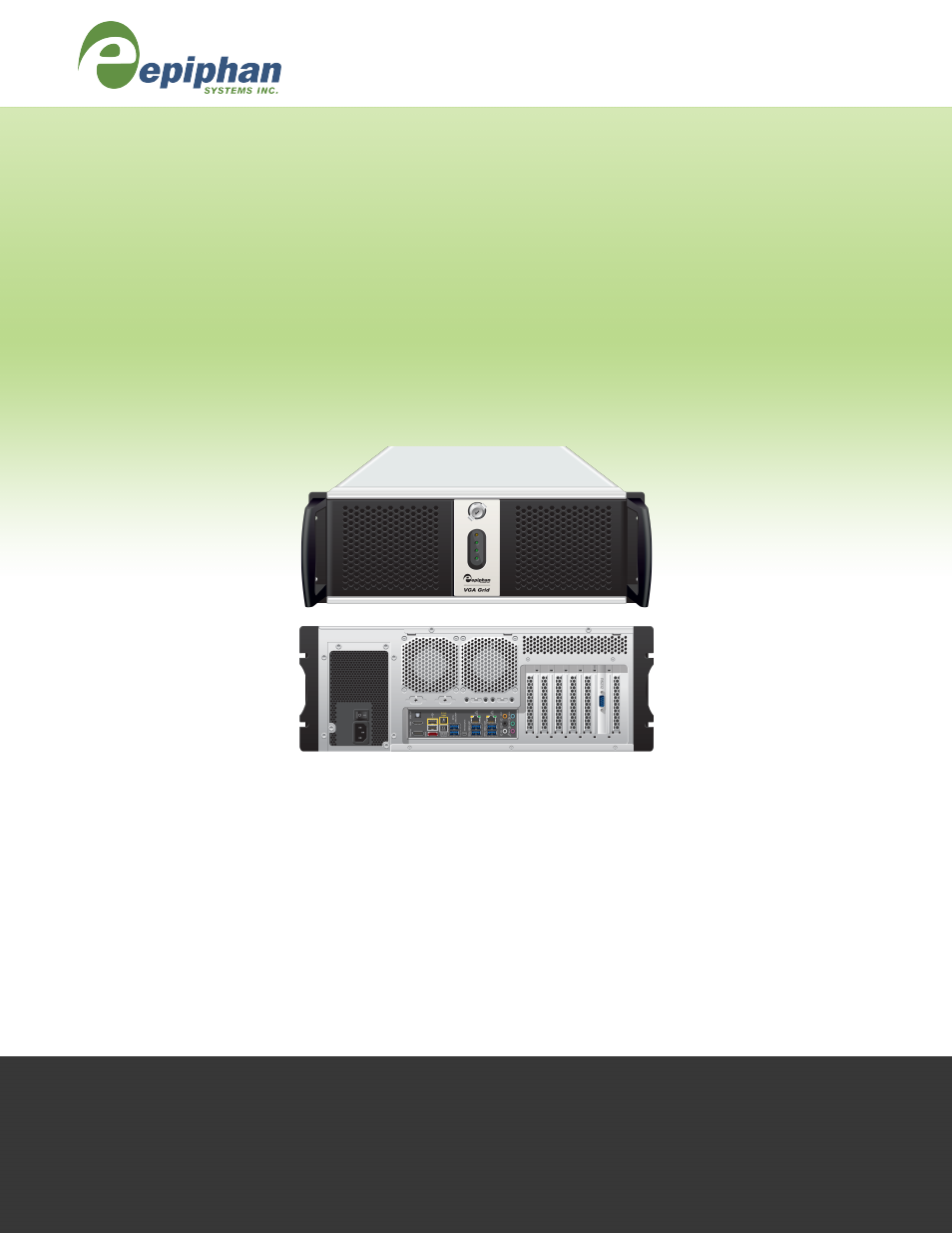Epiphan Networked VGA Grid User Manual
Networked vga grid, User guide
This manual is related to the following products:
Table of contents
Document Outline
- Thank You for Choosing Epiphan!
- Welcome
- Networked VGA Grid Overview
- What's in the Box?
- Quick Start
- PART 1: Setup
- 1-1 Connect to the Admin Interface
- 1-2 User Administration
- 1-2 View system information
- 1-3 Configure Network Settings
- 1-3 Configuration presets
- 1-4 Configure Encoder Network Settings
- 1-5 Configure Date and Time
- 1-6 Restrict Viewers by IP Address
- PART 2: Sources
- 2-1 Identify sources
- 2-2 Configure a video source
- 2-3 Configure an audio source
- 2-4 Fine-tune source configuration
- PART 3: Channels
- 3-1 Create and configure channels
- 3-2 Identify a channel
- 3-3 Fine-tune channel configuration
- 3-4 Customize your channel
- 3-5 Preview a channel
- PART 4: Stream
- 4-1 Stream your video
- View available video formats
- Choose a streaming option
- Disable (and enable) streams for viewers
- Restrict access to streams for viewers
- Stream content using HTTP or RTSP
- Configure streaming ports
- Stream content using HTTP Live Streaming (HLS)
- Stream content using UPnP
- Stream content using a Content Distribution Network
- Stream content using multicast streaming
- 4-2 Samples of stream settings
- PART 5: Record
- 5-1 Recorders
- 5-2 Create Recordings
- 5-3 File Maintenance
- 5-4 File and recording transfer
- Automatic file upload (AFU) overview
- Configure the files included in AFU (part 1 of 3)
- Enable and configure the frequency of AFU (part 2 of 3)
- Configure AFU to an FTP server (part 2 of 3)
- Configure AFU using RSync (part 2 of 3)
- Configure AFU using CIFS (part 2 of 3)
- Configure AFU to a secure FTP server (part 2 of 3)
- Configure AFU using SCP (part 2 of 3)
- Upload to an external USB drive
- View the file upload log
- 5-5 Use the Local FTP Server
- PART 6: View
- PART 6: View
- 6-1 View your video
- PART 7: Maintenance
- 7-1 Mobile / Tablet Operator Interface
- 7-2 Power Down and System Restart
- 7-3 Save and Restore Device Configuration
- 7-4 Perform Factory Reset
- 7-5 Firmware Upgrade
- 7-6 Support
- 7-7 Storage Disk Maintenance
- 7-8 Encoding Mode
- 7-9 Control with RS-232 / Serial Port
- 7-10 Control with HTTP Commands
- 7-11 Configuration Keys for Third Party APIs
- System-level Settings Keys(Read-only)
- System-level Settings Key (Read/Write)
- Recording Configuration Keys
- HTTP Server Configuration Keys
- IP-Based Access Control Configuration Keys
- UPnP Configuration Keys
- SAP Configuration Keys
- Frame Grabber Configuration Keys
- Broadcast Configuration Keys
- Channel Encoder Configuration Keys
- Channel Logo Configuration Keys
- Channel Layout Configuration Keys
- Audio Configuration Keys
- Stream Publishing Configuration Keys
- RTSP Announce Configuration Keys (Publish Type 2)
- RTP/UDP Configuration Keys (Publish Type 3)
- MPEG-TS Configuration Keys (Publish Types 4 and 5)
- RTMP Push Configuration Keys (Publish Type 6)
- Content Metadata Configuration Keys
- 7-12 Troubleshooting
- PART 8: Releases and Features
- Software and Documentation License

